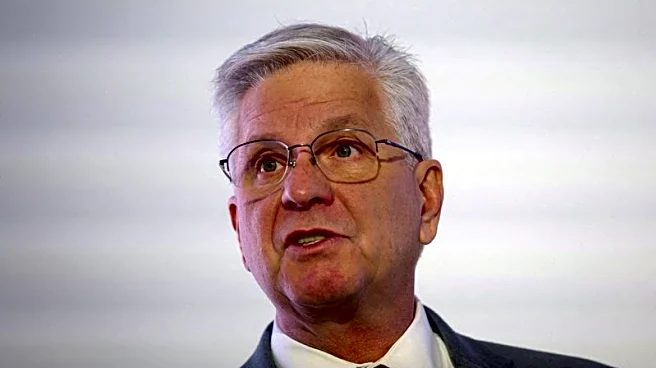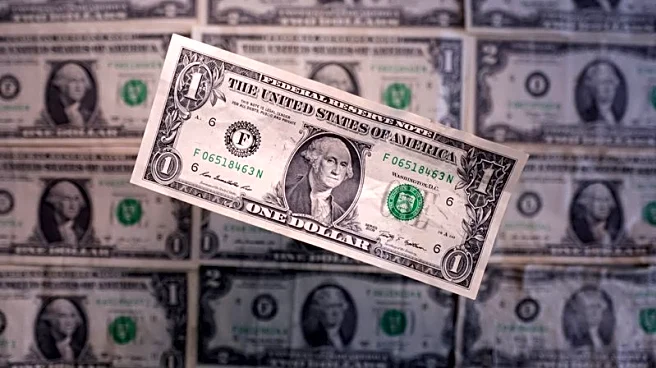What's Happening?
Gold prices have ended August with significant gains, closing at $3,443.50 per ounce, up over 4.7% for the month. The market sentiment is bullish, driven by expectations of a Federal Reserve rate cut following dovish remarks by Fed Chair Jerome Powell. The possibility of a rate cut has been bolstered by weak economic indicators, including the core PCE inflation rate remaining above the Fed's target. Additionally, a weaker US dollar has enhanced the appeal of gold. Analysts predict that gold may soon challenge the all-time high of $3,500 per ounce, set in April.
Why It's Important?
The rise in gold prices reflects broader economic uncertainties and the potential impact of Federal Reserve policies on commodity markets. A rate cut could lower borrowing costs, stimulate economic activity, and increase demand for safe-haven assets like gold. The situation also highlights the interplay between monetary policy and market dynamics, with implications for investors and financial institutions. The conflict between President Trump and the Federal Reserve adds a layer of political uncertainty, which could further influence market volatility and the US dollar's status as a global reserve currency.
What's Next?
The upcoming nonfarm payrolls report is expected to be a critical factor in the Federal Reserve's September interest rate decision. Weak hiring data could solidify expectations of a rate cut, providing further momentum for gold prices. Conversely, stronger economic data may lead to consolidation around current levels. The ongoing political tensions between President Trump and the Federal Reserve will continue to be a focal point, potentially affecting market sentiment and policy decisions.
Beyond the Headlines
The situation underscores the role of gold as a traditional safe-haven asset during times of economic and political uncertainty. It also raises questions about the long-term implications of monetary policy shifts and their impact on global financial markets. The potential for stagflation, where inflation and economic stagnation occur simultaneously, is a concern that could drive further interest in gold.












